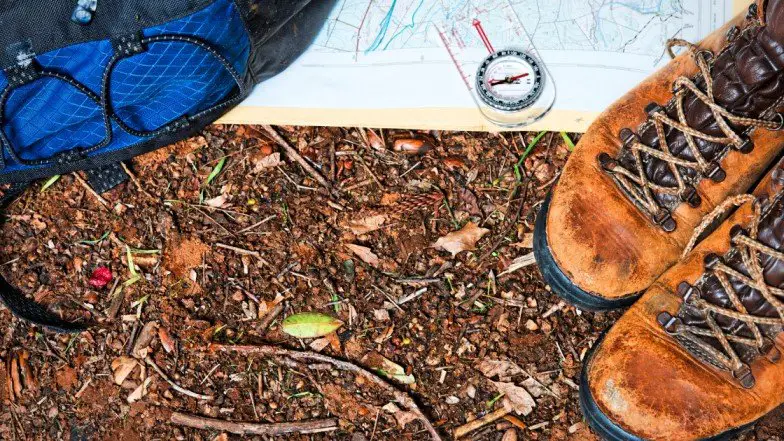A day hike checklist should include items such as water, snacks, a map, first aid kit, and appropriate clothing. A well-prepared hiker is essential for a successful and safe hike.
For an enjoyable and safe day hike, careful planning and preparation are essential. From appropriate footwear to a properly packed backpack, having the right gear can make all the difference. Understanding the terrain, weather conditions, and potential emergencies can help hikers be ready for whatever they might encounter on the trail.
This article provides a comprehensive guide to creating a day hike checklist, ensuring that hikers are fully equipped and ready to enjoy a day of outdoor adventure. It covers the essential items to bring, tips for packing and organizing gear, and advice for staying safe on the trail. Whether you’re a seasoned hiker or new to the trails, having a well-prepared day hike checklist is crucial for a successful and enjoyable outdoor experience.
Choosing The Right Gear
When preparing for a day hike, selecting the appropriate gear is crucial for a successful and enjoyable experience. To ensure you are equipped with the necessary tools, focus on three key aspects: Appropriate Footwear, Proper Clothing, and an Essential Backpack.
Appropriate Footwear
- Choose sturdy, comfortable shoes with good grip
- Ensure your footwear is suitable for the terrain
- Opt for moisture-wicking socks to prevent blisters
Proper Clothing
- Dress in layers to adjust to changing weather conditions
- Wear breathable, moisture-wicking fabrics
- Protect yourself from the sun with a hat and sunglasses
Essential Backpack
- Select a backpack with proper support and padding
- Ensure it has enough space for water, snacks, and essentials
- Pack a first aid kit, map, and emergency whistle
Packing Essential Supplies
The key to a successful day hike is proper preparation, and an essential part of that is packing essential supplies. When venturing out on a day hike, it is crucial to pack the necessary items to ensure your safety and enjoyment of the experience.
Ample Water
Carrying enough water is vital to stay hydrated during your hike. Water helps regulate body temperature and prevent dehydration.
Nutritious Snacks
Bringing nutritious snacks like trail mix, granola bars, and fruits will provide you with energy to sustain your hike.
Navigation Tools
Including navigation tools such as a map, compass, and GPS device can help you stay on the right track and avoid getting lost.
First Aid Kit
Having a first aid kit with essentials like bandages, antiseptic wipes, and pain relievers is crucial for addressing minor injuries on the trail.
Checking Weather And Trail Conditions
Before embarking on a day hike, it is crucial to check the weather forecast and trail conditions. This step is important to ensure a safe and enjoyable hiking experience. By doing so, you can be prepared for any potential challenges along the way and make informed decisions about your hike.
Weather Forecast
Checking the weather forecast is an essential part of planning for a day hike. It helps you determine what type of clothing and gear you should bring, as well as the overall feasibility of the hike. By understanding the weather conditions expected during your hike, you can dress appropriately and pack the necessary items to stay comfortable.
Here are a few things to consider when checking the weather forecast:
- Temperature: Know the average temperature range for the day, as well as any expected fluctuations. Dress in layers to accommodate changing conditions.
- Precipitation: Check for any chance of rain, snow, or storms. Pack a waterproof jacket or poncho to stay dry.
- Wind: Be aware of the wind speed and direction. Strong gusts can affect your balance and make the hike more challenging.
- Visibility: Check for fog, mist, or haze. Poor visibility can make navigational tasks difficult, so bring a map, compass, and/or GPS device.
- Sun Exposure: Monitor the UV index and plan accordingly. Apply sunscreen, wear a hat, and bring sunglasses to protect yourself from excessive sun exposure.
Trail Reports
In addition to checking the weather forecast, it is equally important to review trail reports before embarking on your hike. Trail reports provide valuable information about the current conditions and any potential hazards you may encounter along the way. These reports are often contributed by fellow hikers, park rangers, or local organizations.
Here are some key factors to consider when reviewing trail reports:
- Trail Closures: Check if any sections of the trail are closed or restricted due to maintenance, wildlife activity, or natural disasters.
- Terrain Conditions: Look for reports on the condition of the trail, including any obstacles such as fallen trees, landslides, or rockslides.
- Water Crossings: Check if there are any water crossings along the trail. Reports may indicate the water level, current strength, or potential hazards.
- Wildlife Sightings: Be aware of recent wildlife sightings, especially if there are reports of aggressive animals or areas with high bear activity.
- Trail Markings: Look for reports on the visibility and condition of trail markers, as well as any potential confusion points.
By checking the weather forecast and reviewing trail reports, you can be better prepared for your day hike. Remember, the goal is to have a safe and enjoyable experience, and staying informed about the weather and trail conditions is an essential part of achieving that.
Understanding The Route
Understanding the route is crucial before embarking on a day hike. To ensure a safe and enjoyable adventure, it’s essential to familiarize oneself with the trail, difficulty level, and potential challenges that may be encountered along the way.
Trail Map
Obtaining a detailed trail map is indispensable for any day hike. A map provides a visual representation of the route, highlighting key points of interest, landmarks, and potential hazards. Before setting out, ensure you have a current and reliable trail map that covers the planned hiking area.
Guidebook Or Online Resource
A guidebook or reliable online resource can offer valuable insights into the trail’s features, including wildlife, flora, and historical points of interest. Consider utilizing reputable guidebooks or online platforms to gain a comprehensive understanding of the hiking route.
Researching Difficulty Level
Understanding the difficulty level of a hike is pivotal for preparedness. By conducting thorough research, hikers can gauge the trail’s elevation gain, terrain ruggedness, and potential obstacles. Reviewing difficulty ratings and fellow hiker experiences can provide valuable context for what to expect on the trail.
Safety Precautions
When embarking on a day hike, ensuring safety is of the utmost importance. Being prepared for any situation can make all the difference in enjoying a memorable hike or encountering potentially dangerous situations. By following a few simple safety precautions, you can stay safe and fully enjoy your outdoor adventure.
Telling Someone Your Plans
Before hitting the trails, it is crucial to inform someone about your hike plans. Informing a family member, friend, or park ranger about the details of your hike helps ensure that someone knows where you are and when to expect your return. Provide them with the exact location of your hike, estimated time of return, and any alternative plans you might have in place.
Knowing Your Limits
Understanding your physical fitness level is key when planning a hike. It is essential to choose a hike that matches your abilities, taking into account the distance, elevation gain, and terrain difficulty. Pushing yourself beyond your limits can lead to exhaustion and injuries. Always remember to start with shorter and easier hikes if you’re a beginner or gradually increase the difficulty level to challenge yourself responsibly.
Wildlife Awareness
When venturing into nature, it’s important to remember that you are sharing the outdoors with wildlife. Respecting their habitat and being aware of their presence will contribute to a safer hiking experience. Educate yourself on the types of wildlife that inhabit the area and understand their behaviors. Carry bear spray or other protective items recommended for the region and know how to use them properly.
Additionally, if you come across wildlife during your hike, be cautious, and keep a safe distance. Avoid approaching or feeding them, as this can be dangerous for both you and the animals. Remember, observing from a safe distance allows you to appreciate their beauty while minimizing any potential risks.
By adhering to these safety precautions such as informing someone about your hike plans, knowing your limits, and being aware of wildlife, you can hike confidently and enjoy a safe and memorable outdoor adventure.
Credit: namastaynature.com
Leave No Trace Principles
When going on a day hike, it’s essential to adhere to Leave No Trace Principles – a set of guidelines aimed at minimizing human impact on the environment. Following these principles ensures that you not only enjoy the outdoors but also preserve its natural beauty for future generations. Let’s explore how to apply these principles on your next adventure.
Pack It In, Pack It Out
Ensure you carry out all the waste, including packaging, food scraps, and any other items you bring with you. Leaving no trace of your visit means bringing your trash back with you for proper disposal. Always carry a small trash bag with you to collect any waste generated during your hike.
Respect Wildlife
Keep your distance from wildlife and avoid feeding them. Respecting wildlife helps to maintain their natural behavior and ecosystems undisturbed. Remember, observing from a distance is the best way to appreciate the beauty of wildlife.
Stay On The Trail
By sticking to marked trails, you minimize your impact on the environment. Staying on the trail helps to protect vegetation and prevents soil erosion. It also ensures that you don’t disturb important habitats off the designated path.
Preparing For Emergencies
Ensure a smooth day hike by preparing ahead with a checklist. Pack essentials such as water, snacks, navigation tools, first aid kit, and sun protection. Dress appropriately, and let someone know your plans. Stay safe and have a great time on the trails!
Preparing for Emergencies Emergency Contact Information It’s crucial to have emergency contact details handy in case of unforeseen events. Include names, numbers, and addresses. Carrying a Whistle or Signal Mirror A whistle or signal mirror can assist in signaling for help over long distances. Keep them easily accessible. Emergency Shelter An emergency shelter such as a compact tent or thermal blanket can provide protection from the elements. Remember, being prepared can make all the difference in unforeseen situations while hiking.
Staying Hydrated And Nourished
Staying hydrated and nourished is essential for a successful day hike. Make sure to bring plenty of water and nutritious snacks to keep your energy levels up throughout the journey.
Drinking Water Frequently
Drinking water frequently is key to keeping your energy levels up on a day hike. Remember to pack a reusable water bottle and take sips regularly to stay hydrated.
Eating Regularly
To sustain your energy, eating regularly during a day hike is essential. Pack nutritious and lightweight snacks such as trail mix or energy bars to keep yourself fueled.
Avoiding Dehydration
Avoiding dehydration is crucial for a safe and enjoyable hike. Monitor your water intake and look out for signs of dehydration, such as thirst, dizziness, or fatigue.
Credit: foxandpines.com
To ensure a safe and enjoyable day hike, it is essential to have a well-prepared checklist. By following the guidelines outlined in this blog post, you can ensure that you have all the necessary items for your hike. From proper clothing and footwear to adequate hydration and navigation tools, taking the time to organize your gear can make all the difference.
So, get out there and explore nature’s wonders with confidence, knowing that you are fully prepared for your hiking adventure.
FAQs:
What Gear To Bring On A Day Hike?
On a day hike, bring essentials like water, snacks, map, compass, first aid kit, proper footwear, and weather-appropriate clothing.
What Is A Good Distance For A Day Hike?
A good distance for a day hike is typically between 5-15 miles round trip, depending on your fitness level and experience. Remember to consider elevation gain and terrain difficulty for an enjoyable hiking experience.
How Do I Plan A Day Hike?
To plan a day hike, choose a trail, check the weather forecast, pack essential items like water, snacks, and navigation tools, wear appropriate gear and footwear, and inform someone about your plans. It’s important to be prepared and stay safe while enjoying the outdoors.
How Do You Pack A Light For A Day Hike?
When packing for a day hike, carry essential items like water, snacks, a first aid kit, and a map. Also, pack a flashlight, a multi-tool, sun protection, and a fully charged phone. Opt for lightweight and compact gear to minimize weight.



